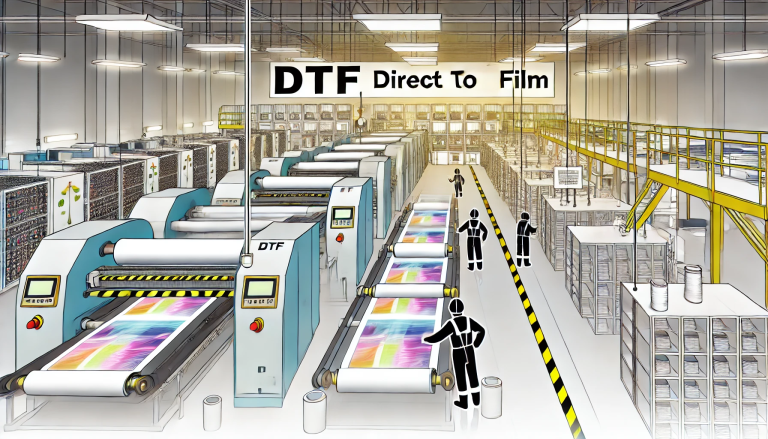“What are DTF Transfers?” -MAXDTF- DTF PET paper Factory, DTF transfer tape Supplier, Made in China
Part 1: Introduction to DTF Transfers
Direct-to-Film (DTF) printing is a relatively new but swiftly evolving technology in the garment decoration industry. This innovative printing technique involves applying designs directly to a special film, which is heat transferred onto a garment. DTF transfers combine the best features of traditional screen printing and modern direct-to-garment (DTG) printing. They can accommodate full-color images and intricate designs while offering excellent durability and color vibrancy.
Summary: DTF stands for Direct to Film, a recent printing technique that transfers designs from a film to a garment. It’s a hybrid of traditional screen printing and DTG printing that offers vibrant colors and design flexibility.
Part 2: The DTF Printing Process
The DTF printing process begins with preparing the digital image, which is then printed onto a particular type of film using specialized DTF inks. After printing, an adhesive powder is applied to the printed film and melted, creating a sticky surface. This prepared transfer is then applied to the garment under heat and pressure. Once the transfer cools, the film is peeled away, leaving the design on the garment.
Summary: The DTF process involves preparing a digital image, printing it onto a film using DTF inks, applying adhesive powder, and transferring the design to the garment through heat and pressure.
Part 3: Benefits of DTF Transfers
DTF transfers offer several advantages. Firstly, they enable full-color printing with a soft hand feel, meaning the printed area isn’t stiff or rough to the touch. They’re also extremely durable and resistant to fading and cracking. DTF transfers work well on both light and dark garments and can be applied to various fabric types, including cotton, polyester, and blends. Lastly, the DTF printing process requires fewer steps than traditional methods, reducing production time and cost.
Summary: DTF transfers are advantageous for their full-color printing, soft touch, durability, versatility across fabric types and colors, and simplified, cost-effective process.
Part 4: Potential Drawbacks of DTF Transfers
Despite their advantages, DTF transfers are not without potential drawbacks. The required specialized equipment, inks, and films can be costly, making this process less accessible for small businesses or hobbyists. Furthermore, DTF transfers can be less eco-friendly than some other printing methods due to the use of plastic film and adhesive powders.
Summary: Drawbacks of DTF transfers include the cost of specialized materials and equipment and potential environmental concerns due to plastic film and adhesive powders.
Part 5: Conclusion
Despite some challenges, DTF transfers have carved a niche in the garment printing industry due to their ability to produce high-quality, full-color images on a variety of fabrics. As technology advances and the industry seeks more sustainable alternatives, DTF printing may continue to evolve and improve.
Summary: Despite some downsides, the many benefits of DTF transfers make them a popular choice in garment decoration. As the industry progresses, we can expect further developments in DTF printing technology.



